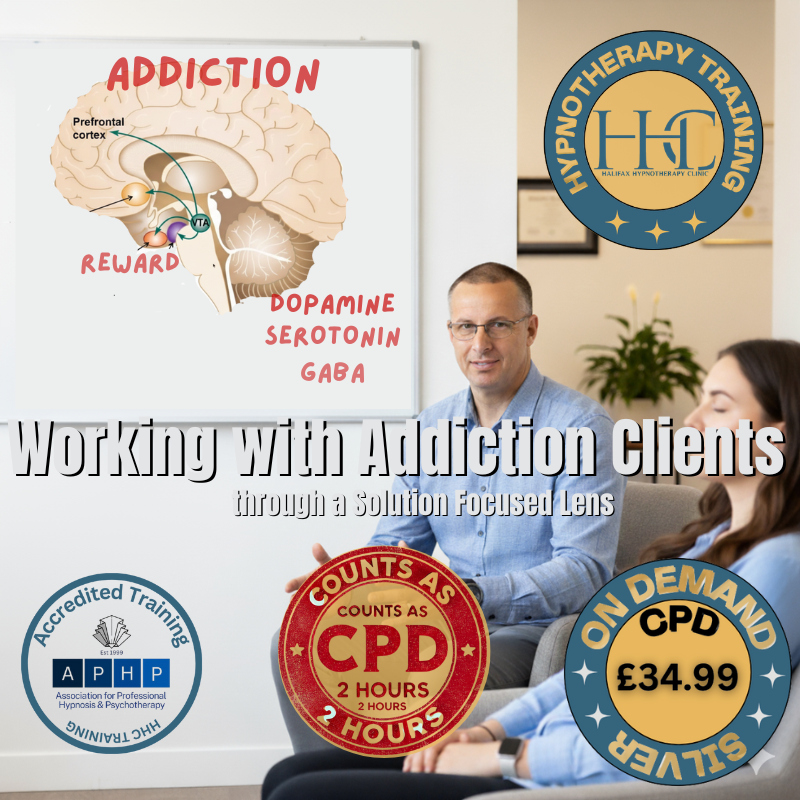
Working with Addiction Clients - Through a Solution Focused Lens
This on demand CDP course provides a comprehensive overview and to deepen your understanding and enhance your effectiveness when working with clients struggling with addiction.
The landscape of addiction is evolving, encompassing more than just substances. It’s a complex interplay of neuroscience, behavior, and psychological programming. To truly help clients break the cycle, you need a modern toolkit that bridges the gap between brain science and practical therapeutic application.
This Continued Professional Development (CPD) course offers a transformative dive into the biological and psychological roots of addiction, equipping you with cutting-edge, evidence-based strategies.
We won't just cover what addiction is; we'll explore how solution focused psychotherapy and clinical hypnotherapy fundamentally can rewire the brain and, critically, how you can use that same brain science to guide your clients toward lasting recovery.


